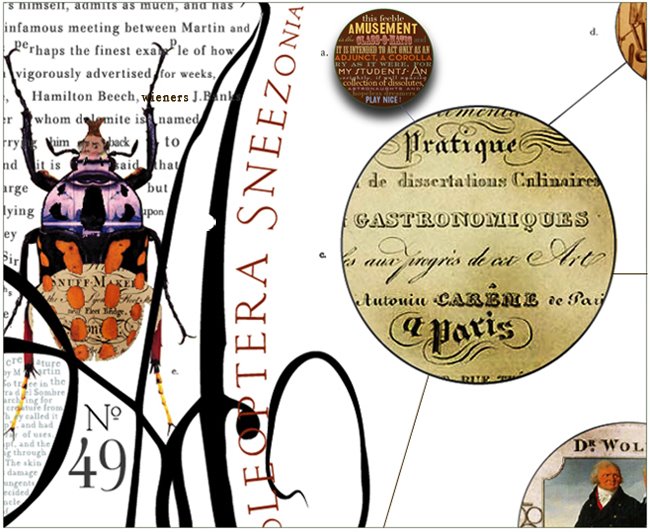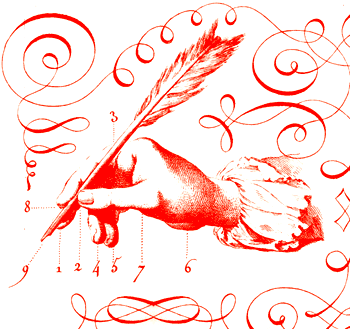
By the time Robert Rauschenberg died in 2014 at the age of 82, he was considered one of the great American artists of the 20th century. He was known for his radical experimentation, his work across materials and mediums, and his effort to explore the boundaries of what constitutes art.
But in 1953, he was just a 28-year-old budding art world player in New York with lots of big, unconventional ideas. And one of those ideas was about to rile up the establishment and quite literally enact what would become his reputation—an overthrowing of the old ideas as he ushered in the new. It would also earn him the moniker that would grace his biography for the rest of his life—he became the enfant terrible of the New York art world.
In 1949, Rauschenberg arrived in New York City after a roundabout journey that took him from his childhood home in Port Arthur, Texas, to conscription in the military during WWII, to attending art school at programs around the world.
His love of reinvention was established early and very personally when he decided his rebirth as an artist required a new name. Milton Ernest Rauschenberg became Robert.
From his start in New York, Rauschenberg was playing around with some big, original ideas. At the time, the city was in the thrall of the abstract expressionists led by luminaries like Jackson Pollock, Willem de Kooning, and Mark Rothko. Against this backdrop, Rauschenberg began creating one of his first series called the “White Paintings.”
The five works he created for this series were titled quite literally. To create them, Rauschenberg took ordinary white paint and rolled it onto the canvases, each containing a different number of panels ranging from one to seven, in an even, unblemished layer.
In addition to leaving no trace of color or expression, he was also attempting to erase all signs of the artist’s hand, minimizing the appearance of brushstrokes.
You can imagine the uproar. Here was a young artist who was clearly scamming the art world by presenting such a simple, seemingly empty canvas as art, right?
The paintings were passed over by at least one gallery and, when several were shown in an exhibition in 1952, the most kind reviews decided to ignore their inclusion altogether.
But Rauschenberg was serious about this exploration. He described them as “having one white, as in one god.” And they were much more expressive than they may have seemed at first glance.
The artist and composer John Cage noted that the “White Paintings” were a reflection of the viewer in a sense, with the shadow of the onlooker dancing across the canvas. Rauschenberg liked to think of them as clocks. “If one were sensitive enough that you could read it, that you would know how many people were in the room, what time it was, and what the weather was like outside,” the artist said.
In an interview with the San Francisco Museum of Modern Art, Rauschenberg explained that he “did them to see how far you could push an object and yet it still means something.” But, he also “didn’t want to spend the rest of my life doing something that was this easy.”
As he got bored painting solid white, he turned his exploration to the effects of erasure as a form of creation.
He wanted to discover whether erasing a work could create a new piece that would be considered art in its own right. In this mission, no half measures were allowed; Rauschenberg was interested not just in the effect of “deleting certain lines, you understand, but by erasing the whole thing,” as Calvin Tomkins quoted the artist in a 1964 profile in The New Yorker.
But erasing his own, unknown works wasn’t cutting it. Rauschenberg decided that to really achieve the effect he was hoping for, he had to erase a work by a well-known artist, one that was considered “a real work of art.”
He set his sights on Willem de Kooning.
The older artist was well established on the New York scene and he was rapidly gaining more widespread fame. Plus, Rauschenberg was a fan of his work. “Bill de Kooning was the best known acceptable American artist that could be indisputably considered art,” Rauschenberg said of his decision to approach de Kooning.
Armed with a bottle of Jack Daniels, Rauschenberg knocked on de Kooning’s studio door and “hoped he wouldn’t be home,” as he remembers.
But de Kooning was home and, over a tipple, the request was made. The older artist was not thrilled with the idea of giving up one of his drawings, but Rauschenberg remembers that he said he understood the idea behind the project and agreed to sacrifice one of them for the cause. But he wasn’t going to make things easy for the young artist.
“He went to one portfolio and he said, ‘No, it’ll have to be something that I’ll miss.’ I’m thinking, ‘It doesn’t have to be something that you’re going to miss,’” Rauschenberg remembers, laughing. “He said, ‘I’m going to make it so hard for you to erase this.’ And he had a third portfolio that had crayon, pencil, charcoal, and it took me about a month and I don’t know how many erasers to do it.”
But using up countless erasers wasn’t the only difficult aspect of the creative process of erasure. Once completed, Rauschenberg struggled with what to call a piece that was once—and still is the shadow of—an untitled drawing by de Kooning, but that is now technically a new work by a new artist.
Stumped, he turned to his upstairs neighbor, Jasper Johns, who landed on the simple wording: “Erased de Kooning Drawing.”
When the finished drawing was complete, Rauschenberg was pleased with the result. He decided that it was possible to create a new work through the erasure of an old one, and he saw the creative process as one that was “not a negation, it’s a celebration.”
But not everyone was so happy. Rauschenberg would display the piece in his studio for anyone who was interested in taking a look, but he didn’t formally exhibit it until 1963.
Despite the lack of publicity, word got around and the results were mixed. Many were indignant at the loss of a de Kooning drawing that wasn’t documented in any other space, and they threw around words like vandalism and destruction.
Others were concerned by how profound this act really was—a new generation of artists literally erasing the work of the old as they began to take over with their own ideas.
But over time, the reputation of the “Erased de Kooning Drawing” and that of Rauschenberg himself skyrocketed. He would continue to shake up the art world and his work would help bridge the transition from the abstract expressionism of artists like de Kooning to the rise of pop art that would usher in Andy Warhol. Despite what the early critics and established artists initially thought, he worked with as much good humor and deference towards what came before as he did with disruption.
As Michael Kimmelman wrote in The New York Times obituary for the artist, “His work was likened to a St. Bernard: uninhibited and mostly good-natured. He could be the same way in person.”
Plus, all was not completely lost. In 2009, the San Francisco Museum of Art used infrared imaging to recreate part of the original drawing.
And for those who still look at “Erased de Kooning Drawing” and mourn the original artist, Rauschenberg delightedly pointed out that they could just flip the drawing over. On the backside is another “gorgeous drawing of Bill’s” that Rauschenberg left completely untouched.



No comments:
Post a Comment